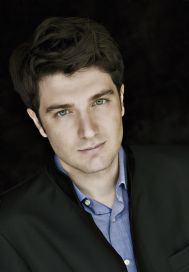|
Symphony
SRS SEASON ENDS WITH RESOUNDING TA-TA-TA-BANG
by Terry McNeill
Sunday, June 1, 2025
Symphony
YOUTHFUL VIRTUOSITY ON DISPLAY AT USO'S MAY CONCERTS
by Peter Lert
Saturday, May 17, 2025
Symphony
MYSTICAL PLANETS AND LIVELY GERSHWIN ORTIZ AT FINAL SRS CONCERT
by Peter Lert
Sunday, May 4, 2025
Symphony
VSO'S CONCERT MUSIC OF TIME, MUSIC OF PLACE
by Peter Lert
Sunday, April 27, 2025
Choral and Vocal
VOCAL ELEGANCE AND FIRE AT THE 222'S RECITAL APRIL 26
by Pamela Hicks Gailey
Saturday, April 26, 2025
CANTIAMO SONOMA SINGS AN INSPIRED GOOD FRIDAY MOZART REQUIEM CONCERT
by Pamela Hicks Gailey
Friday, April 18, 2025
DRAMATIC SHOSTAKOVICH SYMPHONY CLOSES PHILHARMONIC'S 25TH SEASON
by Terry McNeill
Sunday, April 13, 2025
LARGE COLLEGE OF MARIN AUDIENCE GREETS STOPHER ARTISTRY
by Terry McNeill
Saturday, April 5, 2025
Chamber
FRISSON DELIVERS SHIVERS OF DELIGHT
by Abby Wasserman
Sunday, March 30, 2025
OLD AND MOSTLY NEW IN SRS MARCH CONCERT IN WEILL
by Peter Lert
Saturday, March 22, 2025
|
 |
 Pianist Alessio Box |
WHAT SOUND DO STAR-CROSSED LOVERS MAKE?
by Steve Osborn
Sunday, February 12, 2017
Valentine’s Day is just around the corner, so the Santa Rosa Symphony feted the occasion by telling and retelling the story of Romeo and Juliet, a tale ever the more poignant during our era of stark divisions. The first telling was from Berlioz; the second from Prokofiev. In between was Brahms’ monumental B-Flat Second Piano Concerto, Op. 83, with soloist Alessio Bax.
Mr. Bax is a no-frills pianist who sits ramrod straight with his head bent over the keyboard. No skyward gazes or expressive swaying for him: just the keys and the pedals. Given his diminutive frame, he doesn’t seem like he could generate much volume with his restrained approach--but appearances are deceiving. After a lengthy warm-up, he displayed as much thunder and amplitude as the best of them, along with an exceedingly soft touch.
It often takes soloists and orchestras a few measures to warm up to each other before they start playing music instead of notes. In this case, the warm-up extended for two movements. Bax, conductor Bruno Ferrandis and the orchestra didn’t really connect until the gorgeous Andante of the third movement.
Part of the problem was Mr. Bax’s insistent use of the damper pedal, which blends notes together into a smooth veneer instead of bringing out their contrasts. The result was too much legato and not enough staccato or resonance. Bax’s technique was flawless, and he played all the notes, but he seemed distant from the other musicians on the stage.
That all changed in the Andante, one of the most heartfelt in the repertoire. Principal cellist Adelle-Akiko Kearns opened with a beautifully sustained solo that traversed the orchestra and ended up with Mr. Bax, who entered with a touch so light and responsive that his fingers barely glanced the keys. The ring finally fit the finger, and the ensuing interplay with the orchestra was as restful and becalmed as a warm embrace. Goose bumps were the order of the day. The unusual fourth movement was just as good, leading to a well-deserved standing ovation.
Berlioz and Prokofiev offered a different take on musical romance, the first too short and the second too long. Before the Brahms concerto, the orchestra played only the introduction to Berlioz’s rarely heard “Romeo and Juliet,” a self-described “dramatic symphony” about the ill-fated couple. In contrast, the second half featured not one but two suites from Prokofiev’s ballet of the same name--14 pieces in all. The second suite is by far the more dramatic and would have made an ideal mate for more selections from the Berlioz.
As it was, the Berlioz score from 1839 simply whetted the appetite for more. The furious string work mimicking the feuding Montagues and Capulets gave way to authoritative playing from the horns and trombones to herald the arrival of the duke. The sound reverberated throughout the hall, followed by a pianissimo exit from the strings. The story was over before it began.
Not so with the Prokofiev suites, which carry Romeo and Juliet all the way from their first meeting to their untimely demise in the tomb. The first suite consists mostly of incidental dances from the ballet, but the second clearly reflects the story. You can almost close your eyes and see the dancers before you.
Of particular note was the Montagues and Capulets scene at the beginning of the second suite, which covers the same dramatic ground as the Berlioz. The orchestra’s sound was impressive at all levels, each section holding its own in a battle of fortissimos. On the flip side, the subsequent “Young Juliet” was hauntingly beautiful, with exceptional playing from the cello and saxophone.
The rest of the suite was equally superb. Mr. Ferrandis kept a steady rhythm throughout and ratcheted up the intensity as the tragic conclusion loomed ever closer. It was a bravura performance, culminating in a searing rendition of the final scene at Romeo and Juliet’s grave. Happy Valentine’s Day.
|

